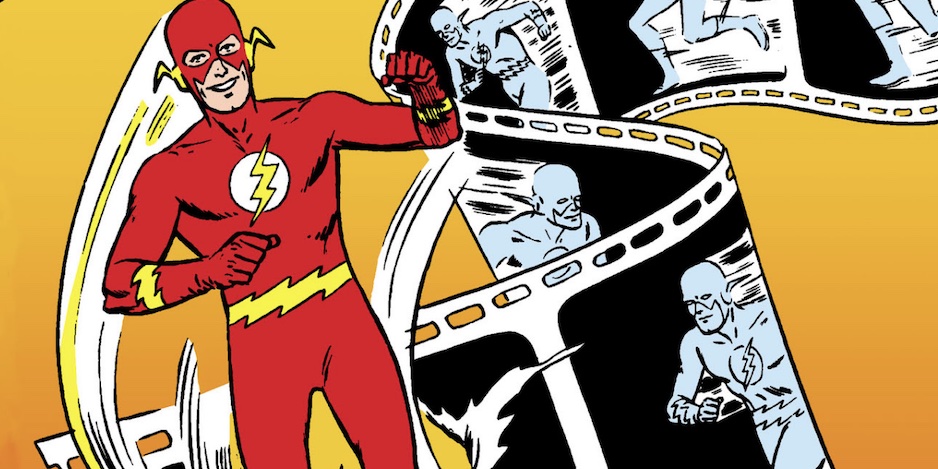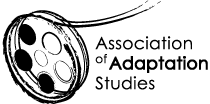
Transcr(é)ation CFP
“Adaptation – From Graphic Novels (and Comics) to Films and/or Vice
Versa” (Winter 2023)
Transcr(é)ation is a specialty journal dedicated to intermediality and the dialogues between texts and films, without prioritizing either. This term has been borrowed from translation studies in order to shed some light on the benefits of such a dialogue between the media. We welcome any theoretical or analytical works, interviews, and thematic dossiers on the questions of intermediality, transposition between media, dialogue between and through the arts, or any other foray into related subjects.
For our second dossier, we are calling for papers in either English or French concerning the adaptations of comics and graphic novels to films (and vice versa).
According to the editors of Transmediality, Comics and Adaptation (2019), comics have been omitted from discussion on intermediality, although one can trace the birth of the first film adaptation of a comic as far back as the 19th century, with the Frères Lumière adapting L’arroseur arrosé: “Throughout the early days of cinema, this emerging entertainment looked to other media to confer artistic credibility and narrative stability. Although novels and plays were the most adapted materials, films based on comics maintained an important presence” (Burke, 3). This does not seem surprising since, by establishing an active relationship with the reader during the reading process, comics become a medium with rich potential when it comes to contributing to the compression of narrative mechanisms specific to the digital context where both the linearity of the frame and the type of reading that actively involves the reader become the essence of the narrative act (Deprêtre and Duarte, 9).
Although we do not intend to retrace the successive debates on film adaptation, we would like to continue the discussion initiated by colleagues concerning the dialogues between the comic strip (to be understood in the broad sense, including graphic novels and mangas) and films. Although “adaptations from comics seldom gain canonical recognition and they rarely figure in the list of best films of all times”, “seldom please the critics”, and “seem to have little automatic appeal for comics readers” (Lefèvre, 1), we believe that the exchanges that happen through the comics/film corpus deserve more sustained attention. The comic object is captured as a composite medium – a combination of images and words working together and independently to tell a story. It thus shares several characteristics with cinema, while also evoking novelistic practices, but it cannot be reduced to either.
Adapting a comic (or adapting to a comic) is indeed not without consequences. First of all, as some point out, it is the occasion of a reflection on the place of the reader, the public, and the fans in this process of resumption often labeled as a perversion: a detour through the theory of R. Barthes on the pleasure of the text can allow, like C. Gelly’s study on the cultural reconfiguration of the Holmes series argues, to go in more depth into the processes put in place by inventive authors/directors to “comfort” their audience while “decomforting” them. Some typologies distinguish the postures of the reader and that of the viewer, reminding that « viewers do not react the same way to a drawing as to a photographic image” (Lefèvre, 9). The question of the point of view, focus and ocularization (Jost), mental models (Fauconnier) and narrative spaces, as combined by J.A. Condé in their article on the adaptation of Kafka’s Metamorphosis, could also be addressed as part of a study that would cover, for example, different types of comics adapted on the screen. The repetition of (or emancipation from) the style or posture of the person who adapts is also interesting: edifying studies have for example focused on Enki Bilal and his adaptation of Nikopol (see S. Geoffroy-Menoux), Deprez and their adaptation of Kafka’s Castle (see J-C. Andrieu de Levis), Muñoz and the “borderline case” of their adaptation of The Stranger (see E. Deprêtre), or the reports and dissentions of the “shot by shot” transcreations between the media which brought about Sin City and Watchmen (see D. Roche). Finally, the question of the remotivation of a narrative in relation to a new context is equally relevant: how does the second work renegotiate and update narratives that have already been adapted many times (see J-B Cheymol on the adaptation of The Iliad and the Odyssey by Jean Harambat; or O. Delers on the comics adaptations of the Marquis de Sade’s novels).
Underlying these reflections is the question of fidelity, and we find it all the more interesting that “the contradictions of fidelity can be transcended if it is seen as a discourse about texts rather than a quality they possess. The question is not whether adaptations are faithful to their sources but how that relationship is constructed so that the changes screenwriters, directors, and designers introduce are accepted as necessary” (Rothery and Woo, 127).
Articles about the adaptability of a comic or graphic novel, the question of fidelity (taking into account the reactions of fans or authors for instance) are encouraged as part of a refining of our knowledge about the medium. We will favor studies dedicated to comics and films still not yet considered: the corpus aligning with those of anthologies and works, already numerous, dealing with franchises or abundantly studied adaptations (Men in Black, From Hell, Sin City, 300, Avengers, etc.) should demonstrate innovative approaches to be accepted.
Please find below a proposed blueprint for reflection:
- Adaptation of the comics’ formal elements (page, framed panels and framing devices, gutter, movement, sound, speech balloons, scale, lettering, etc.)
- Film and/or graphic novel’s rhetorics, iconostasis
- Question of CGI and the composited image
- Transfiction, narration, and renewing
- Question of continuation and sequels
- Case studies of dialogues comics or graphic novels / films, including webcomics
We also accept interviews with authors and directors connected with the subject.
Timeline
- Deadline for submitting your proposal (including title, 250-300 word summary, address, affiliation and author’s biobibliography (approx. 150 words)): August 15th, 2022, to: transcreation.journal@gmail.com (All submissions will be evaluated and you will receive an answer before the end of August)
- Deadline for submitting accepted articles (6,000 – 8,000 words) following the journal’s guidelines: November 30th, 2022 (peer-reviewing process could last until the end of January)
- Publication of the volume planned for March 2023
Click here to download a copy of the CFP, including a Works Cited.
